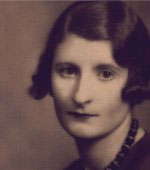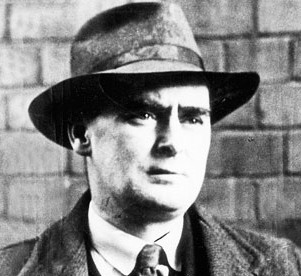Digital Literary Atlas of Ireland,
1922-1949
Emigration Map
 Peadar O’Donnell’s first three novels Islanders (1928), Adrigoole (1929) and The Knife (1930) each represent dimensions of the socio-cultural and natural landscapes of Donegal. Collectively their narratives chart a West to East trajectory, which can be mapped to trace the symbolic path of emigration, experienced by the county’s natives during the early twentieth century.
Peadar O’Donnell’s first three novels Islanders (1928), Adrigoole (1929) and The Knife (1930) each represent dimensions of the socio-cultural and natural landscapes of Donegal. Collectively their narratives chart a West to East trajectory, which can be mapped to trace the symbolic path of emigration, experienced by the county’s natives during the early twentieth century.
House-Island and Provincial Town Map



In their respective ‘Big House’ novels, The Last September (1929) and Mad Puppetstown (1931), Elizabeth Bowen and Molly Keane, writing as daughters of the landed Anglo-Irish, depicted the disintegrating lifeworlds of their minority culture during the Irish War of Independence. Conversely, the town of Mellick in the Kate O’Brien novel Pray for the Wanderer (1938) acts as a polemical metonym for her native Limerick, and the increasingly binding relations between family, class, religion, gender and sexuality which emerged in southern Ireland following independence.
Dublin Bricolage Map

The affective, comedic and existential renderings of Samuel Beckett’s depictions of Dublin in his early short story collection More Pricks Than Kicks (1934) volume of poetry Echoes Bones and Other Precipitates (1935) and first French language publication Le Fin (1946) illustrates a shift in his literary perspective from a latent Cartesian verisimilitude to a more phenomenological and fragmented, existential impression of place. A composite ‘Beckettian Bricolage Map’ charted from the stories in More Pricks Than Kicks, the poetry of Echoes Bones and the transposed cityscapes of Le Fin can be plotted to convey Beckett’s fragmented sense of space.
Northern Impressions Map

Northern Ireland landscapes and Belfast’s cityscapes depicted in Forrest Reid’s The Retreat, of the Machinations of Henry (1936) and Michael McLaverty’s Call My Brother Back (1939), confirm Humanist Geographer Yi-Fu Tuan’s observation that ‘the visitor’s evaluation of environment is essentially aesthetic, it is an outsider’s view. The outsider judges by appearance, by some formal canon of beauty.’ Despite being brought up in different religious traditions, both writers shared a middle-class urban sensibility, but the rural landscapes and cityscapes represented in their respective works contrast significantly.
